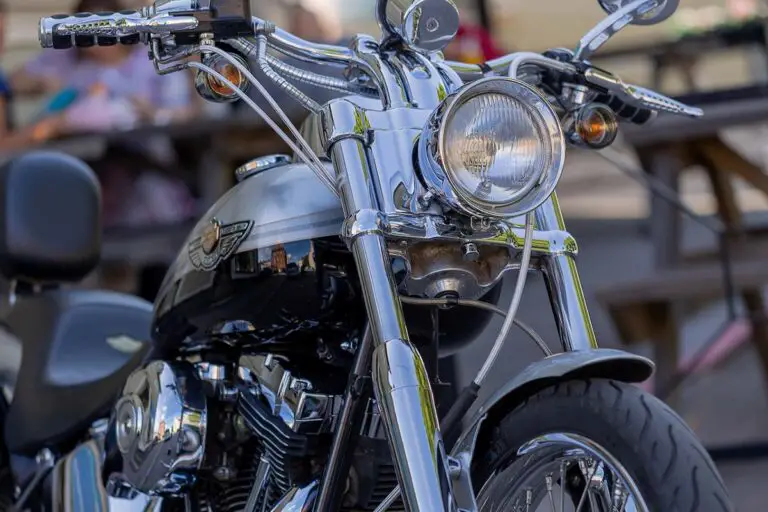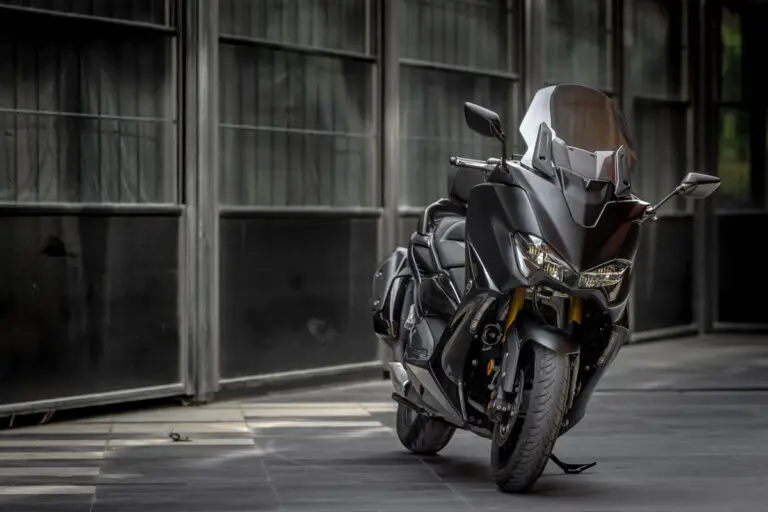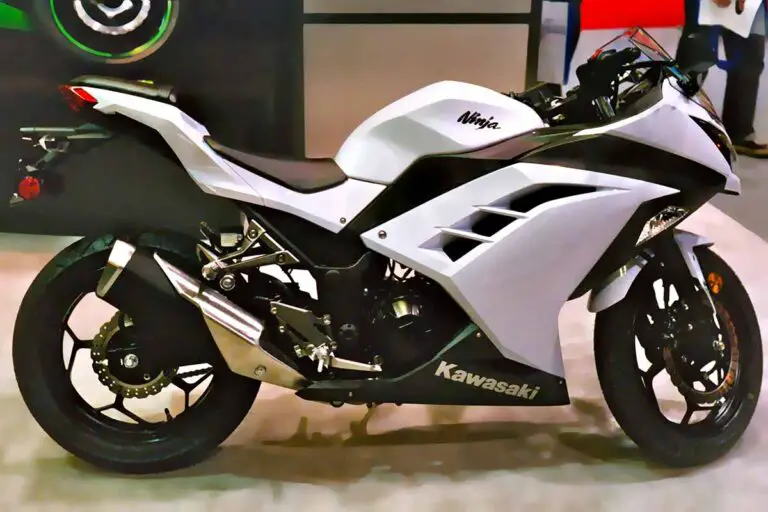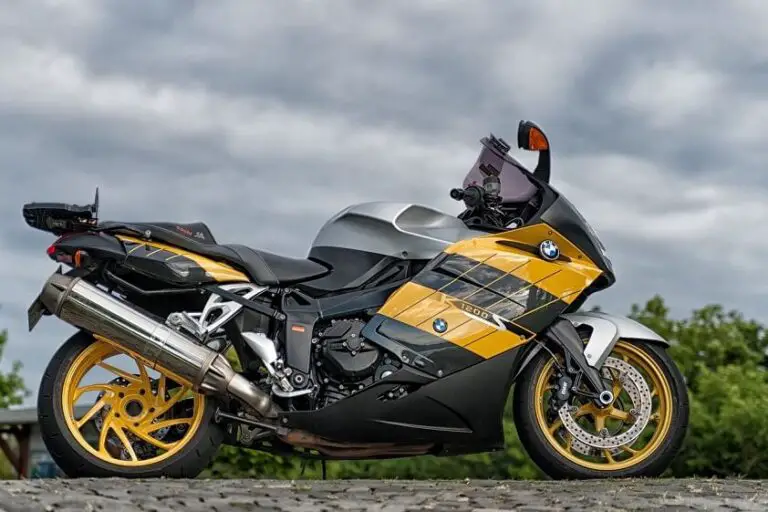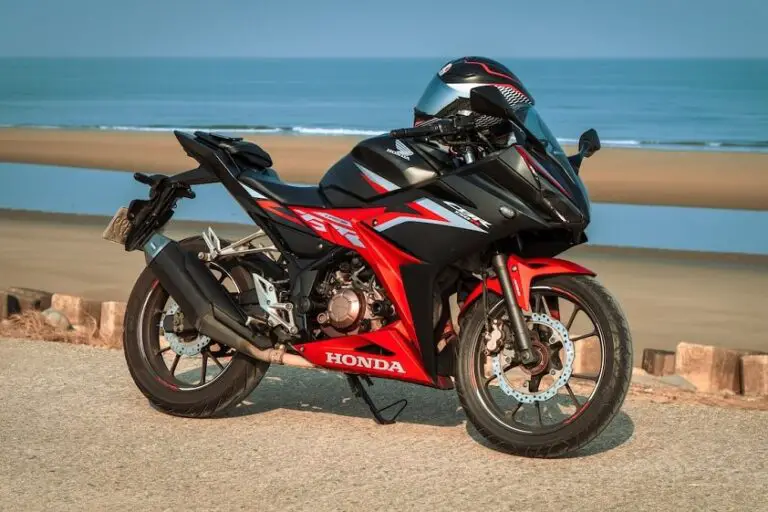Kawasaki Ninja 400 vs 650 (Which Is Better?)
Disclosure: We may get commissions for purchases made through links in this post.
Sport-tourers may have seemed like a temporary niche due to the overbearing presence of adventure bikes, but they are recently making a comeback. The return of these full-faired two-wheelers further blurs the line between sportbikes and tourers. They also draw consumers closer to the Kawasaki Ninja 400s and 650s — gutsy, stylish, and tempered motorcycles that have been around since the turn of the century.
The main differences between the Kawasaki Ninja 400 and 650 lie in their engine size, weight, and performance figures. The Kawasaki Ninja 400 is more suitable for city driving, while the 650 is better at cruising. The 650 is also faster and offers better low-end torque.
Notwithstanding dissimilarities, both Kawasaki bikes marry sport-like performance with all-roundedness. This means that either motorcycle can satisfy the whims of experienced motorcyclists and boost the confidence of first-time users. If you cannot decide which bike to own next, continue reading and learn more about the individual capabilities, drawbacks, specs, and features of these Ninjas.
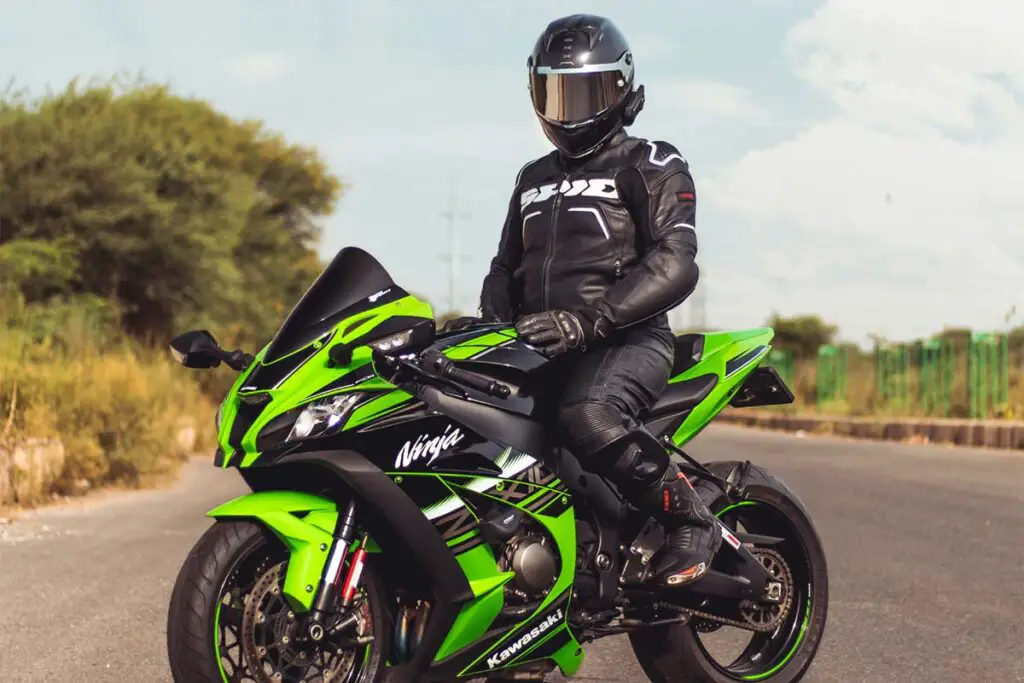
About the Kawasaki Ninja 400 vs 650
The Kawasaki Ninja 400 and 650 belong to the two-cylinder incarnations of the “Kawasaki Ninja” series that began with the 1984 GPZ900R. The 400-class Ninja was introduced to the market in 2018 and had the second smallest displacement out of two-cylinder Ninjas. Meanwhile, its 650-class sibling already has a 16-year production run (and counting) under its belt.
Both are stellar sportbikes in their own right, with the Ninja 400 boasting a 2018 FIM World Championship win by Ana Carrasco. The Ninja 650 is equally track-proven and credited with tournament wins, big and small. Both bikes are undeniably sporty, so Team Green opted to include the KRT (Kawasaki Racing Team) Edition as one of the bike’s trims beginning in 2017.
Kawasaki Ninja 400 vs 650 Specs & Features (EX400G/H vs EX650C9F/D9F)
Engine
Despite the difference in engine displacement, both motorcycles have a liquid-cooled, 4-stroke twin-cylinder mill. Other similarities include the starting system, high compression ratio, and fuel requirement.
Surprisingly, the fuel tank capacities of both bikes only differ by less than two liters — aptly explaining the bigger sportbike’s tight fuel economy. But the latter makes up for it through performance figures and a Kawasaki Ninja 650 top speed rating that is 32-mph faster than its smaller sibling.
| Description | EX400G/H | EX650C9F/D9F |
|---|---|---|
| Engine Type | 4-Stroke, parallel twin-cylinder DOHC | |
| Cooling System | Liquid cooling | |
| Carburetion Type & Fuel | DFI®, 32-mm throttle bodies x 2 | FI, Keihin TTK38 throttle bodies x 2 |
| Fuel Type & Rating | Unleaded gasoline, PON 87 or higher | |
| Tank Capacity | 14 L (3.7 US gal) | 15.5 L (4.1 USgal) |
| Starting System | Electric starter | |
| Displacement | 399 cm³ (24.3 in³) | 649 cm3 (39.6 in³) |
| Bore-Stroke Ratio | 70 × 51.8 mm (2.76 × 2.04 inches) | 83 × 60 mm (3.27 × 2.36 inches) |
| Compression Ratio | 11.5:1 | 11.3:1 |
| Air Filtration | Wet paper filter | Polyurethane foam |
| Lubrication System | Forced lubrication (wet sump) | Forced lubrication (semi-dry sump) |
| Oil Type & Capacity (Draining, Filter Change, Disassembly)* | 1.6 L (1.7 US quarts, at draining) 2.0 L (2.1 US quarts, filter change) | 1.7 L (1.8 US quarts, at draining) 1.9 L (2.0 US quarts, filter change) 2.4 L (2.5 US quarts, disassembly) |
| Top Speed | 105 mph (169 km/h, estimated) | 137.3 mph (220.9 km/h) |
| Horsepower | 43.4 hp (31.9 kW) @ 9,900 RPM** | 71 hp (53 kW, 72 PS — MY) @ 8,500 RPM; 69.7 hp (52 kW, 71 PS — US, CA, CAL) @ 8,000 RPM |
| Torque | 33.3 Nm (3.4 kgf-m, 24.6 lb-ft) @ 8,250 RPM** | 66 Nm (6.7 kgf-m, 49 lb-ft) @ 7,000 RPM |
| Fuel Mileage | 51—65 mpg (3.6—4.6 L/100 km) | 45—55 mpg (4.3—5.2 L/100 km) |
**Source: 2018 issue by Cycle World
Drivetrain
Both Ninjas have a 6-speed constant-mesh, wide-ratio transmission. A wet, cable-actuated multi-disc clutch assembly helps deliver power to the ground, while a #520 O-ring chain (view on Amazon) handles wheelspin.
The Kawasaki Ninja 650R, in particular, received an upgraded three-way, 300-cell catalyzer, enabling the bike to meet stringent Euro-3 emission standards. It also boasts an impressive mid-range guaranteed to challenge beginners and give thrills to more experienced riders.
| Description | EX400G/H | EX650C9F/D9F |
|---|---|---|
| Primary Reduction Ratio | 2.219 (71/32) | 2.095 (88/42) — Gear |
| Gear Ratio – I | 2.929 (41/14) | 2.438 (39/16) |
| Gear Ratio – II | 2.056 (37/18) | 1.714 (36/21) |
| Gear Ratio – III | 1.619 (34/21) | 1.333 (32/24) |
| Gear Ratio – IV | 1.333 (32/24) | 1.111 (30/27) |
| Gear Ratio – V | 1.154 (30/26) | 0.966 (28/29) |
| Gear Ratio – VI | 1.037 (28/27) | 0.852 (23/27) |
| Final Drive | O-ring chain | DAIDO DID 520VP2-T chain (114 links) |
| Final Reduction Ratio | 2.929 (41T/14T) | 3.067 (46T/15T) |
| Overall Drive Ratio | 6.738 @ Top gear | 5.473 @ Top gear |
Ignition & Lighting
| Description | EX400G/H | EX650C9F/D9F |
|---|---|---|
| Ignition | Battery & coil (transistorized, TCBI w/ digital advance) | |
| Ignition Timing | From 10° BTDC @ 1,300 RPM to 40° BTDC @ 10,000 RPM | From 10° BTDC @ 1,300 RPM to 34° BTDC @ 5,000 RPM |
| Idle Speed | 1,300 ± 50 RPM | |
| Battery Format | 12V 8 Ah/(10 HR) FTX9-BS | 12V 10 Ah/(10 HR) FTX12-BS |
| Battery Dimensions | 150 x 87 x 105 mm | 150 x 87 x 130 mm |
| Spark Plug, Gap | NGK LMAR9G, 0.7–0.8 mm (0.028–0.031 inch) | NGK CR9EIA-9, 0.8–0.9 mm (0.031–0.035 inch) |
| Charging System | Triple-phase A.C. alternator | |
| Rated Output | Unspecified in manual | 24 A/14 V @ 5,000 RPM |
| Headlight | LED | Semi-sealed beam |
| Bulb (High/Low) | LED | 12V 55 W + 55 W (quartz-halogen, high); 12V 55 W (quartz-halogen, low) |
| Tail/Brake Light | LED | |
| City Light | ||
| Turn Signal Light (F/R) | 12V 10 W (RY10W, front); 12V 10 W (WY10W, rear) | N/A |
| License Plate Light | 12V 5 W (W5W) | |
Tires & Brakes
Stock rubber for the Kawasaki Ninja 400 consists of tubeless, radial-type Dunlop Sportmax GPR 300 tires (view on Amazon). The 650-cc Ninja uses Bridgestone knobbies. These pairs go on 17-inch aluminum rims, with the Ninja 650’s being 0.5-inch thicker than the 400’s.
Cold-tire pressure for these knobbies ranges between 200 kPa (2.0 kgf-cm2, 28 psi) and 250 kPa (2.50 kgf/cm², 36 psi) and can be tweaked according to payload and type of terrain.
| Description | EX400G/H | EX650C9F/D9F |
|---|---|---|
| Tire Brand (F/R) | Dunlop SPORTMAX, GPR -300F N (F); GPR -300 N (R) | Bridgestone BATTLAX BT021F J (F); BT021R J (R) |
| Front Tires | 110/70R17 M/C 54H, tubeless | 120/70 ZR17 M/C (58W), tubeless |
| Rear Tires | 150/60R17 M/C 66H, tubeless | 160/60 ZR17 M/C (69W), tubeless |
| Cold-Tire Pressure (F/R)* | 200 kPa (2.00 kgf/cm², 28 psi — front); 225 kPa (2.25 kgf/cm², 32 psi — rear) | 225 kPa (2.25 kgf/cm², 32 psi — front); 250 kPa (2.50 kgf/cm², 36 psi — rear) |
| Rim Size (F/R) | 17M/C × MT3.00 (F); 17M/C × MT4.00 (R) | 17 × 3.50 (F); 17 × 4.50 (R) |
| Front Brakes | 310-mm semi-floating disc w/ two-piston balanced actuation caliper | Dual 300-mm petal rotors w/ 27-mm dual-piston calipers |
| Rear Brakes | 220-mm petal disc w/ two-piston calipers | 220-mm petal disc w/ single piston caliper |
| Engine Braking | ABS (Anti-lock Braking System) | Dual-channel ABS |
Suspension
Enclosed in a semi-double-cradle are 41-mm front telescopic forks and a Uni-Trak® rear swingarm. It provides 4.9 inches of wheel travel for the Kawasaki Ninja 650 and slightly longer travel for the Ninja 400.
Both bikes’ ground clearance and turning radius are comparable, and the wheelbase differs by just two inches. The sportbikes’ low center of gravity lends to their superb handling mannerisms and stability on and off-road.
| Description | EX400G/H | EX650C9F/D9F |
|---|---|---|
| Wheelbase | 1,370 mm (53.94 inches) | 1,410 mm (55.51 inches) |
| Minimum Road Clearance | 140 mm (5.51 inches) | 145 mm (5.71 inches) |
| Turning Radius | 2.5 m (8.2 feet) | 2.7 m (8.9 feet) |
| Caster Angle / Trail | 24.7°; 92 mm (3.6 inches) | 25°; 106 mm (4.17 inches) |
| Front Suspension, Travel | 41-mm telescopic fork, 120 mm (4.72 inches) | |
| Rear Suspension, Travel | Uni-Trak® rear swingarm, 130 mm (5.1 inches) | Swingarm, 125 mm (4.92 inches) |
Dimensions
Although these sportbikes look identical on the outside, there are slight differences between the two in dimensions and weight. The Ninja 650 is naturally longer and approximately 46-Kg heavier given its larger piston displacement (and a slew of other features).
Kawasaki managed to shed further weight off succeeding 650 models, bringing down its curb mass by almost 17 lbs. if comparing 2006 and 2010 iterations. As for GVWR (Gross Vehicle Weight Rating), estimated values are within the 350-Kg range for the Ninja 400 and the 400-Kg range for its bigger namesake.
| Description | EX400G/H | EX650C9F/D9F |
|---|---|---|
| Dimensions (L x W x H) | 78.3 x 28 x 44.1 inches (1,990 x 710 x 1,120 mm) | 82.7 x 29.9 x 47.2 inches (2,100 x 760 x 1,200 mm) |
| Seat Height | 30.9 inches (785 mm) | 31.1 inches (790 mm) |
| Curb Weight (Combined) | 166 Kg (366 lbs., EX400G)*; 164 Kg (362 lbs., EX400H)* | 204 Kg (450 lbs., EX650C); 208 Kg (459 lbs., EX650D) |
| Payload Capacity | 176.9 Kg (390 lbs.) | 181.4 Kg (400 lbs.) |
| Estimated GVWR | 354—356 Kg (780—785 lbs.) | 400—404 Kg (881—891 lbs.) |
Exterior
If there’s anything that stands out apart from its performance, it is the Kawasaki Ninja’s sporty aesthetic. Sharper lines and minimalist full fairings — available in Lime Green, Passion Red, Metallic Diablo Black, and Metallic Imperial Red — are characteristic of these sportbikes, without sacrificing their “relaxed ergonomics.”
For the Ninja 650, its overall styling was further enhanced in 2012, when it received a redesigned chassis, two-piece seat assembly, wider bars, improved instrument panel, and redefined bodywork.
The Ninja 400 has offered a multitude of colors since its inception in 2018, as follows:
- 2018: Pearl Solar Yellow, Pearl Storm Gray/Ebony, Metallic Spark Black, Candy Plasma Blue, Lime Green/Ebony
- 2019: Metallic Spark Black, Pearl Storm Gray, Metallic Magnetic Dark Gray, Candy Persimmon Red, Metallic Magnetic Dark Gray, Metallic Spark Black (non-ABS only)
- 2020: Pearl Blizzard White, Metallic Spark Black, Metallic Magnetic Dark Gray, Phantom Blue, Ebony/Lime Green
- 2022: Metallic Carbon Gray, Metallic Flat Spark Black, Metallic Matte Twilight Blue, Metallic Graphite Gray, Lime Green/Ebony, Pearl Blizzard White
How Much is a Kawasaki Ninja?
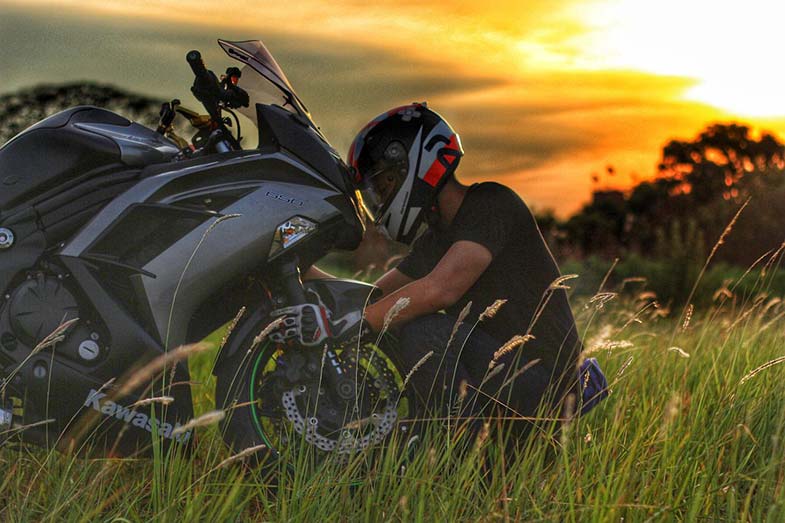
The tables below show an extensive rundown of the original list prices for the Kawasaki Ninja in North America. Note that these figures do not include units sold in other markets, like the Kawasaki ER-6F and ER-6N released in Europe and Australia:
Kawasaki 650 Ninja Price
| Year – Model – Trim | List Price | Retail/Trade-In Values |
|---|---|---|
| 2006 Kawasaki EX650A6F | $6,299 | $1,575 — $2,070 |
| 2007 Kawasaki EX650A7F | $6,399 | $2,135 — $2,810 |
| 2008 Kawasaki EX650A8F | $6,499 | $2,240 — $2,945 |
| 2009 Kawasaki EX650C9F | $6,799 | $2,340 — $3,080 |
| 2010 Kawasaki EX650CAF | $7,099 | $2,745 — $3,615 |
| 2011 Kawasaki EX650CBF | $7,199 | $2,805 — $3,690 |
| 2012 Kawasaki EX650ECF | $7,499 | $3,260 — $4,290 |
| 2013 Kawasaki EX650EDF | $7,599 | $3,395 — $4,465 |
| 2013 Kawasaki EX650FDF (ABS) | $8,099 | $3,475 — $4,575 |
| 2014 Kawasaki EX650EEF | $7,699 | $3,735 — $4,915 |
| 2014 Kawasaki EX650FEF (ABS) | $7,999 | $3,860 — $5,080 |
| 2015 Kawasaki EX650EFF | $7,199 | $3,930 — $5,170 |
| 2015 Kawasaki EX650FFF (ABS) | $7,599 | $4,145 — $5,455 |
| 2016 Kawasaki EX650EGF | $7,199 | $4,170 — $5,485 |
| 2016 Kawasaki EX650FGF (ABS) | $7,599 | $4,410 — $5,800 |
| 2017 Kawasaki EX650JHFL | $7,399 | $4,600 — $6,050 |
| 2017 Kawasaki EX650KHFL (ABS) | $7,799 | $4,850 — $6,380 |
| 2017 Kawasaki EX650KHFAL (ABS, KRT Edition) | $7,999 | $4,975 — $6,545 |
| 2018 Kawasaki EX650JJF | $7,399 | $4,745 — $6,245 |
| 2018 Kawasaki EX650KJF (ABS) | $7,799 | $4,995 — $6,575 |
| 2018 Kawasaki EX650KJFA (ABS, KRT Edition) | $7,999 | $5,125 — $6,745 |
| 2019 Kawasaki EX650JKF | $7,399 | $4,900 — $6,445 |
| 2019 Kawasaki EX650KKF (ABS) | $7,799 | $5,160 — $6,790 |
| 2019 Kawasaki EX650KKFA (ABS) | $7,999 | $5,285 — $6,955 |
| 2020 Kawasaki EX650NLF | $7,399 | $5,490 — $7,225 |
| 2020 Kawasaki EX650NLFA (KRT) | $7,599 | $5,575 — $7,335 |
| 2020 Kawasaki EX650MLF (ABS) | $7,799 | $5,520 — $7,260 |
| 2020 Kawasaki EX650MLFA (ABS, KRT) | $7,999 | $5,595 — $7,360 |
| 2021 Kawasaki EX650NMFNL | $7,599 | $5,810 — $7,645 |
| 2021 Kawasaki EX650MMFNL (ABS) | $7,999 | $5,995 — $7,890 |
| 2021 Kawasaki EX650MMFAL (ABS) | $8,199 | $6,150 — $8,090 |
| 2022 Kawasaki EX650NNFAN (KRT) | $7,899 | $6,135 — $8,075 |
| 2022 Kawasaki EX650MNFNN (ABS) | $8,099 | $6,450 — $8,485 |
| 2022 Kawasaki EX650MNFAN (ABS, KRT) | $8,299 | $6,495 — $8,545 |
Kawasaki 400 Ninja Price
| Year – Model – Trim | List Price | Retail/Trade-In Values |
|---|---|---|
| 2018 Kawasaki EX400HJF | $4,999 | $3,470 — $4,565 |
| 2018 Kawasaki EX400GJF (ABS) | $5,299 | $3,570 — $4,700 |
| 2018 Kawasaki EX400GJFA (ABS, KRT Edition) | $5,499 | $3,705 — $4,875 |
| 2019 Kawasaki EX400HKF | $4,999 | $3,570 — $4,700 |
| 2019 Kawasaki EX400GKF (ABS) | $5,299 | $3,680 — $4,840 |
| 2019 Kawasaki EX400GKFB (ABS) | $5,499 | $3,810 — $5,010 |
| 2020 Kawasaki EX400HLF | $4,999 | $3,740 — $4,920 |
| 2020 Kawasaki EX400HLFA (KRT Edition) | $5,199 | $3,840 — $5,055 |
| 2020 Kawasaki EX400HLFB Metallic Spark Black/Gray | $5,199 | $3,840 — $5,055 |
| 2020 Kawasaki EX400GLF (ABS) | $5,299 | $3,920 — $5,160 |
| 2020 Kawasaki EX400GLFA (ABS, KRT) | $5,499 | $4,070 — $5,355 |
| 2020 Kawasaki EX400GLFB (ABS) | $5,499 | $4,070 — $5,355 |
| 2021 Kawasaki EX400HMFNL | $4,999 | $3,860 — $5,080 |
| 2021 Kawasaki EX400HMFAL | $5,199 | $4,015 — $5,280 |
| 2021 Kawasaki EX400GMFNL (ABS) | $5,399 | $4,170 — $5,485 |
| 2021 Kawasaki EX400GMFAL (ABS) | $5,599 | $4,320 — $5,685 |
| 2021 Kawasaki EX400GMFBL (ABS) | $5,599 | $4,320 — $5,685 |
| 2022 Kawasaki EX400HNFNN | $4,999 | $4,085 — $5,375 |
| 2022 Kawasaki EX400HNFAN | $5,199 | $4,235 — $5,570 |
| 2022 Kawasaki EX400GNFNN (ABS) | $5,399 | $4,350 — $5,725 |
| 2022 Kawasaki EX400GNFAN (ABS, KRT) | $5,599 | $4,535 — $5,965 |
Pros and Cons – Kawasaki Ninja 400 vs 650

Ninja 400 Pros
- The sportbike received an improvement in its bodywork and its wide selection of color options. Compared to the Ninja 650, the 400 has more body paint offerings only five years into its production.
- Its front brakes are adopted from the Ninja ZX-14R, which can be very reassuring for a novice rider. Plus, the bike is also more forgiving compared to its bigger sibling.
- The Kawasaki Ninja 400 top speed is 105 mph (169 km/h) — not insanely fast but more than sufficient for the daily commute, highway driving, and weekend canyon rides. They are also pretty nimble for dodging college students and driving around the campus.
- It is also more adept in stop-and-go traffic and is easier to split.
Ninja 400 Cons
- Despite targeting the beginner segment, the 400-cc Ninja does not come with traction control features or rider modes.
- Rear shocks are lackluster and a bit disappointing, offering nothing more than a 5-way preload adjustment.
- The difference in power delivery does not become apparent until you hit the 85+ mph range. At this point, the 400-cc Ninja is more likely to stumble compared to the 650.
- While it may look aesthetic to an extent, Ninja owners would prefer if the tag/license plate holder were side-mounted and not hanging under the motorcycle’s tail.
- The rear passenger seat/pad may be too skinny and uncomfortable for some passengers.
- Its “beginner bike” marketing package causes the Kawasaki Ninja 400 to be often overlooked as a competent all-rounder.
Ninja 650 Pros
- Thanks to adjustments made to the bike’s fuel injection settings, the bottom-end torque, and smooth low-to-mid-range RPM responsiveness improved.
- Linear power delivery is made easier via the 650’s modified shift lever position, making it best suited for cruising at speeds of 75 mph.
- The 2017 Kawasaki Ninja 650’s redesigned trellis-style framework, all-new upper-rear engine and handlebar rubber mounts, rubber-coated footpegs (rider and passenger), assist-and-slipper clutch, and revised suspension settings (to name a few) translated into reduced vibration and improved handling.
- A 2017 Kawasaki Ninja 650 is guaranteed to outperform even a 2022 Ninja 400 — with its improved suspension, braking system, handling, and power delivery.
- An Economical Riding Indicator illuminates to let the rider know when the bike is running low on fuel.
- Dual-purpose turn signals also function as hazard lights.
- Storage options consist of four tie-down hooks and under-seat storage that can fit small valuables.
Ninja 650 Cons
- Despite having a two-up layout, the sportbike does not come equipped with passenger grab-rails.
- The handlebar position of earlier models may be too upright and unable to support a more aggressive riding position.
- Pre-2017 iterations did not accommodate a two-up setup very well due to the bike’s overweight rear.
Shared Benefits & Drawbacks
Benefits
- Later-year models of these respective sportbikes have revised DFI (fuel injection) settings, further improving combustion efficiency and fuel economy. The said upgrade also enables the Kawasaki Ninja to meet Euro-3 emissions guidelines.
- Novice riders will find both Ninja displacements are non-intimidating and a fantastic value for money. Both are well-balanced machines suitable for beginners and more experienced riders alike.
- They are great bikes to customize. Mods like a 14-inch Delkevic Carbon Fiber Slip-On (view on Amazon), windscreen, rigid ignites, brake light modulator, and braided brake lines easily elevate the look and performance of the Kawasaki Ninja 400 vs 650.
Drawbacks
- Despite periodic enhancements, the recent-year models of the Kawasaki Ninja 400 vs 650 still do not have inverted/USD front forks.
- For earlier models, vibration in the handlebars, seat, and footpegs was very noticeable. This issue was eventually sorted out with the enhancements applied to 2017 production models onward.
Which is a Better First Bike?
You do not necessarily have to ride a smaller-displacement motorbike just because you are new to motorcycle riding. In much the same way, a 650-class two-wheeler is not automatically reserved just for the experienced.
From a previous article comparing Honda Rebels, your weight, comfort, intended application, and budget should be your top considerations when deciding which “beginner bike” to purchase.
Conclusion – Kawasaki Ninja 400 vs 650 Review
In truth, both bikes have pretty similar attributes — power-to-weight ratio, dependability, agility, and the like. Both are highly capable all-rounders and weekend companions. They are good daily drivers and can be ridden with confidence on freeways and tight city roads and twisties.
Styling-wise, they both look amazing and exude clean lines and a sporty vibe. They offer several color options (although the Ninja 400 has quirkier hues than its bigger-displacement sibling).
The Kawasaki Ninja 650 or the smaller 400 would make an excellent first bike. With a very thin line separating these bikes’ differences and similarities, your speed-to-competency as a rider should ultimately be your guide in making this decision.

